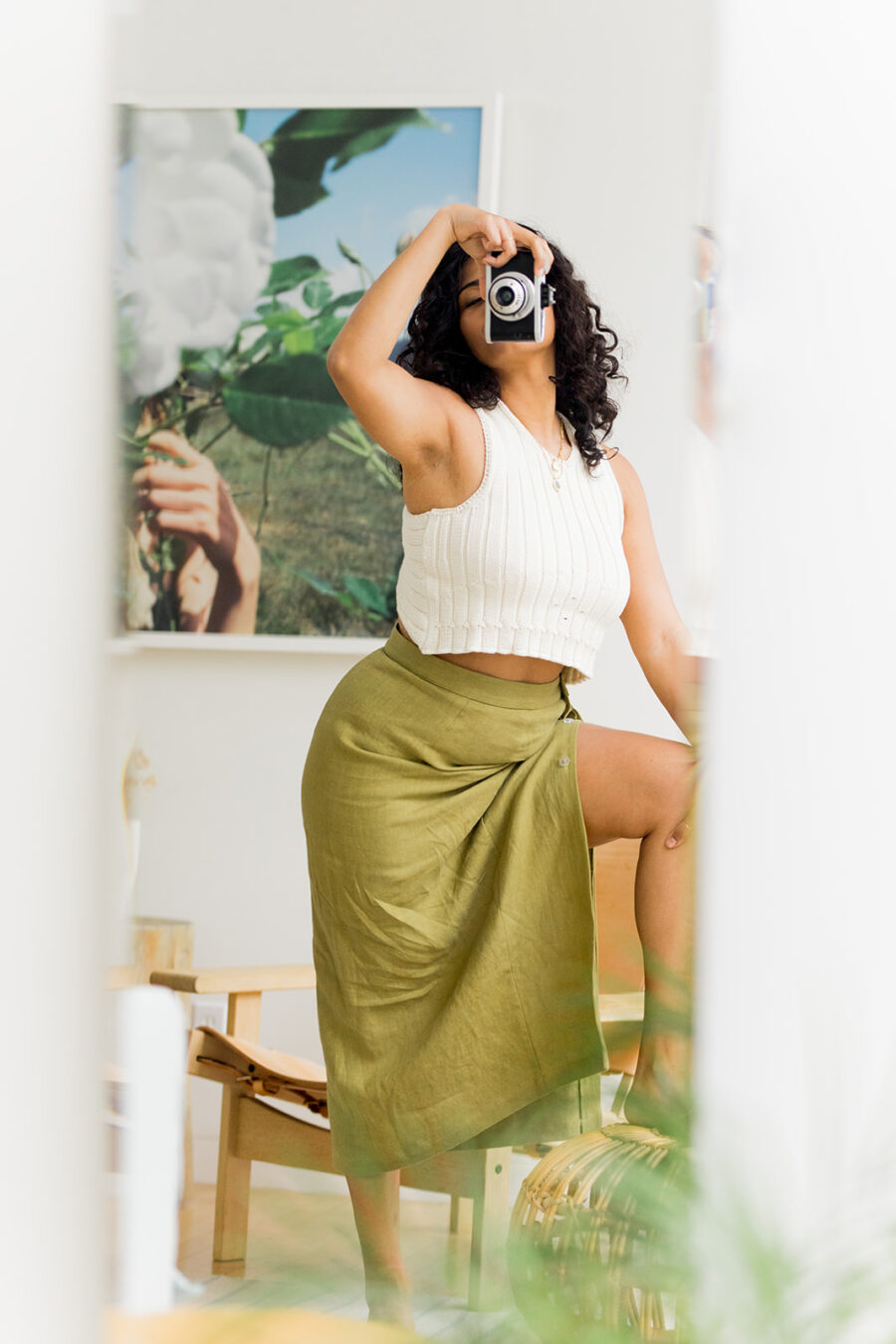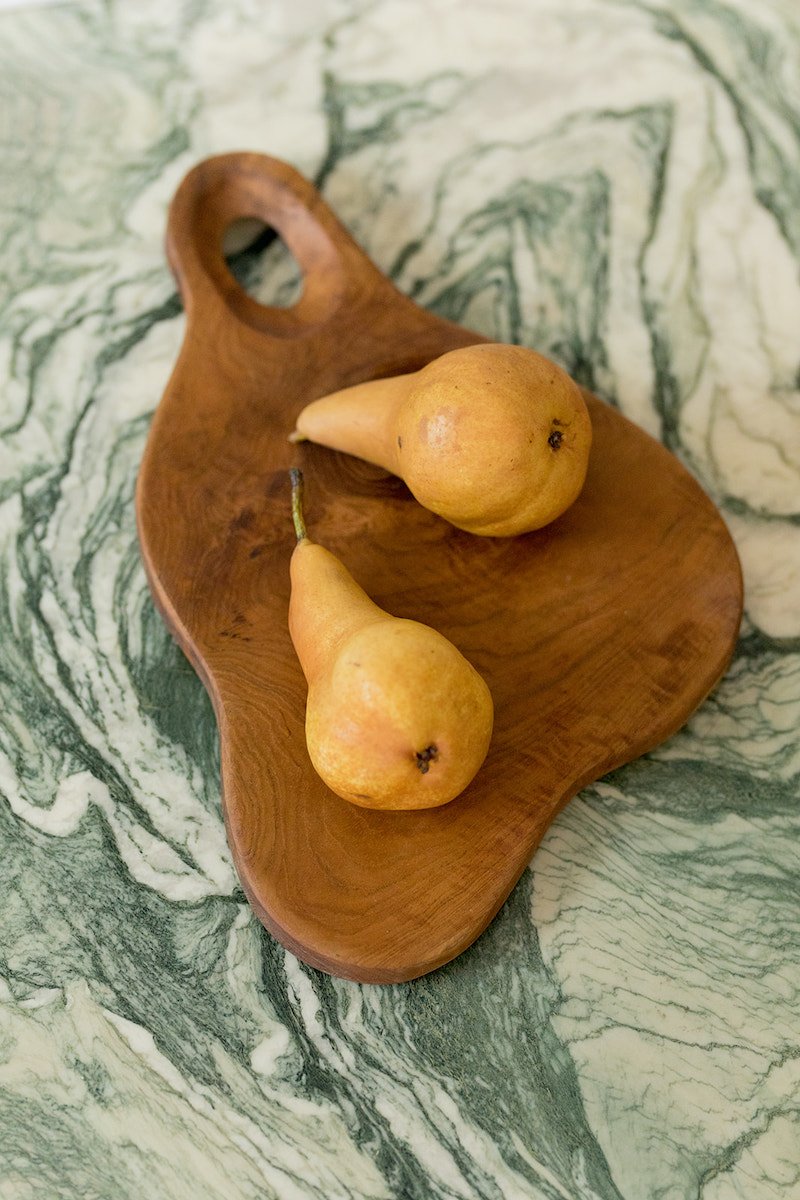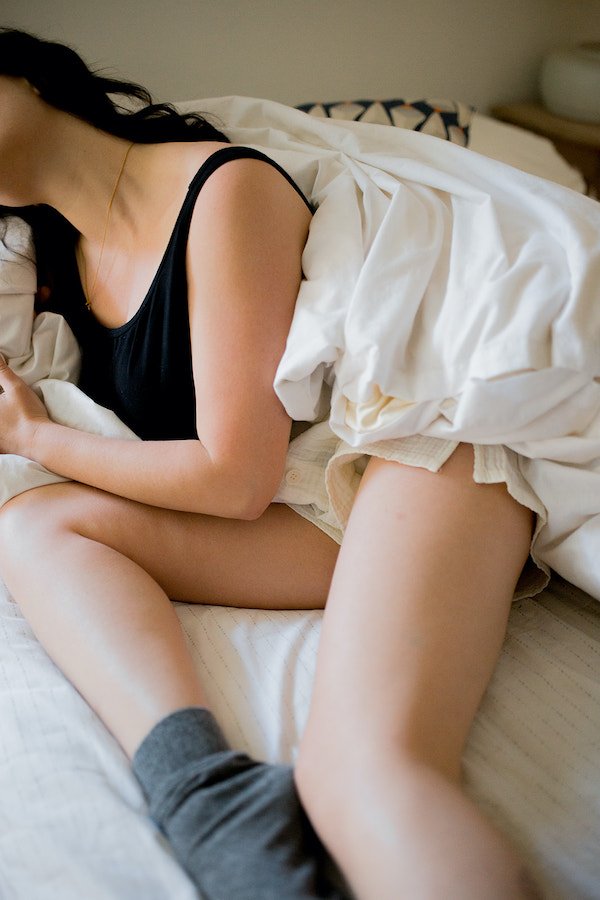
How I Changed My Self-Perception With Self Portraits
You never forget the first time you truly see yourself in a photograph. For me, the first time I really saw myself in a photo, there was an instant feeling of recognition, compassion, and self-kindness.
Finally. That’s me—that’s who I am.
I discovered the art of self-portrait photography amid several life changes and when my self-worth and confidence were at an all-time low. I’d sold my clothing business and moved from Los Angeles—where I’d lived for over 20 years—to a rural, remote property in coastal Oregon. No friends, no extended family, no roots, no plan. I’d also just turned 47, and the question of “what’s next?” was keeping me up at night:
Would I do what the women in my family have always done at this age: shop, lunch, and bump cocktail hour up earlier and earlier? Would I accept the narrative that I am past the point of making significant contributions to the world—that my midlife voice is not worthy?
I’d wasted so much time not knowing who I truly was, and I’d arrived at a point in my life where I realized I wouldn’t wake up one day, finally feeling comfortable with the woman in the mirror. I assumed life would naturally shape me into a confident person, at ease in my body as I approached 50. It turned out this wasn’t the case. For that to happen, I would have to make a change.
“The first time I really saw myself in a photo, there was an instant feeling of recognition, compassion, and self-kindness.”
Initially, the idea of taking intentional self-portraits was so that I would feel more comfortable having my picture taken. As a photographer, I am often challenged with making sure that my subjects feel beautiful; I soon realized I had never given myself the space to feel beautiful, to see myself through a different lens. I figured if I could only learn how to replicate a pose, tilt my head just right, or find the best angle for my body, I would like myself more.
“I realized I had never given myself the space to feel beautiful, to see myself through a different lens.”
The self-portrait experiment would last for 30 days. I would keep the technology simple by using the phone in my pocket, an inexpensive gooseneck tripod with a Bluetooth remote, and work with natural light. I would keep the backdrop minimal, pull my hair back to expose my face, and shoot my side profile. My face has a high degree of asymmetry, giving me a strong preference for my left side over my right, which has always looked alien to me. To clearly see the features I am the most insecure about, I would highlight this side of my face exclusively.
Before beginning, I also did a little digging into the psychology of photography, specifically why I had an adverse emotional reaction to seeing myself in photos. In 1968, Robert Zajonc published his theory of the mere exposure effect, finding that people strongly preferred what was most familiar or comfortable while similarly feeling repelled by the unfamiliar. This explains my preference for my mirrored image—or the flipped camera “selfie” version of my image—over photos taken by someone else. I was the only person in the world who saw this mirrored version of myself; the rest of the world knew a different version of my face, one I wasn’t familiar with or comfortable with.
The instant I made this connection, a world of possibility opened up. I didn’t have to continue to hate photos of myself; I could use these findings to my advantage to finally connect with my own photographs. Bolstered with this knowledge, I was ready to start the experiment.
“I was the only person in the world who saw this mirrored version of myself; the rest of the world knew a different version of my face, one I wasn’t familiar with or comfortable with.”
The first few days of taking self-portraits felt a little lonely—just me, in my bedroom, with a tripod and the camera. I didn’t have a plan other than trying to snap some decent photos of myself using the non-selfie side of my phone. But sitting with myself in that way felt exposing, vulnerable, and indulgent. Those first few sessions were full of frustration and fear: Who did I think I was?
Not only was I struggling with the technical aspect of ensuring I was in the frame without being able to see what I was doing, but I was also disappointed with the results. No matter how hard I tried, the photos weren’t meeting the vision I had in my head. I’d pose for a picture thinking I looked good, then run to the phone to check, only to feel ashamed of the captured image.
I trudged to the back of the house every day for two weeks, tripod in tow, to sit for 20 to 30-minute sessions. No matter how hard I tried, the final images continued to disappoint. Looking back, I can see how simple issues like poor lighting, tripod height, and lens distortion influenced my feelings about the photos. At the time, though, looking through the camera roll felt like torture.
When frustration would build, I’d remind myself to stay open and curious, remove expectations of perfection, and just play. It helped to set an intention for each session to spark my creativity and keep myself grounded. Here’s where the magic started to happen. Until then, I’d been taking photos without a plan or a creative spark. Once I added intention into my sessions by creating a mood board of images reflecting the confidence, warmth, and ease I wanted my own photos to portray, my feelings about the pictures began to shift.
In each self-portrait session, I found myself focusing on a different insecurity, making sure I captured it honestly and in a way that made me feel beautiful. The key to taking a self-portrait I felt connected to was allowing myself to be vulnerable. I felt insecure about my facial features, my age, and the tummy pooch I could never quite get rid of. I chose to highlight it all. When I finished the sessions and sat down to look through the photos, not only did I see myself in a new light, but I saw the beauty that is me with both increased satisfaction and compassion.
“I stopped feeling like I needed permission to spend time with myself. Self-portraiture and healing my relationship with my own image gave me that opportunity.”
I began to eagerly anticipate my self-portrait sessions. I had a mood board full of ideas to recreate, a playlist to keep my energy high, and I finally told my family exactly what I had been doing in the back of the house. More importantly, I stopped feeling like I needed permission to spend time with myself. Self-portraiture and healing my relationship with my own image gave me that opportunity.
By day 30 of the experiment, I was used to seeing myself through the back camera lens as others saw me. I also liked what I saw. I finally saw myself and felt a deep connection to the woman in the photographs. Not the version I present for everyone else—daughter, wife, mother, sister, friend—just me. Just Lisa. I finally felt present and at ease with who I am, in photographs and in life.
What began as a secret self-portrait journey transformed into something else. I’ve returned to self-kindness and acceptance, finally feeling at ease with who I am and who I’m becoming.
“I finally saw myself and felt a deep connection to the woman in the photographs. Not the version I present for everyone else—daughter, wife, mother, sister, friend—just me. Just Lisa.”
My self-portrait journey has also allowed me to become an educator and mentor to a community of Self-Portrait Studio members, all experiencing their own self-portrait journey. By sharing my images online, I’ve connected with a larger community of women searching for a solution to feeling more empowered in their photos—women who are willing to do the self-exploration necessary to heal their relationships with themselves through the camera lens.
Today, I continue to sit for self-portrait sessions as a form of self-care, and I reach for photos of myself when I need to feel reconnected to myself. I still revisit those early sessions on my camera roll and have so much compassion and love for the person I was in those moments. They are a wonderful reminder of how just much I have grown.
Lisa Haukom (she/her) is a story-based self-portrait photographer bringing unseen moments to life through portrait and editorial photography. Based in Florence, Oregon, she provides self-portrait education and virtual photography services to her interior, lifestyle, and brand clients using their iPhone cameras.



